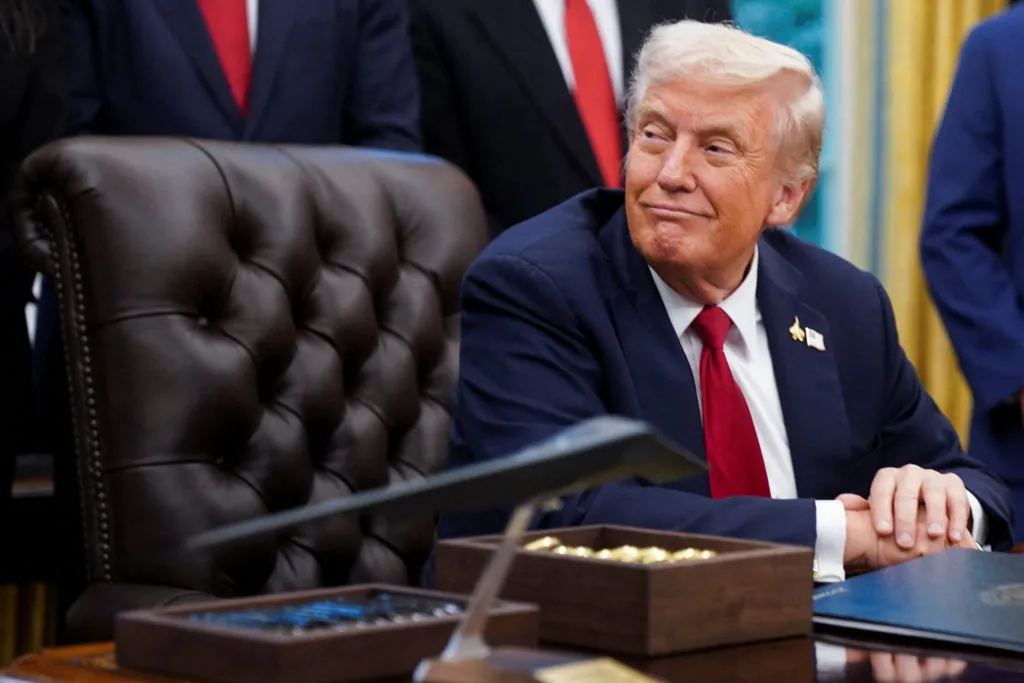With Layoff Threats, Trump Raises the Stakes for the GOP in the Shutdown
The U.S. government shutdown entered its second day, with the Trump administration escalating its standoff with Democrats. In a series of high-profile moves, the White House not only cut funding for major infrastructure projects in New York but also raised the prospect of firing federal workers despite warnings from some Republicans that the hardline approach could backfire politically.
Just hours after the shutdown began Wednesday, Trump’s budget director Russell Vought announced on social media that $18 billion in infrastructure funding would be frozen. This included money already committed under contracts for the Second Avenue subway expansion and a new Hudson River tunnel linking New Jersey and Manhattan. Later, he doubled down, threatening that some furloughed workers could lose their jobs permanently.
The actions signaled that both sides were digging in, raising the odds that it will take significant concessions to reopen the government. Trump has expressed confidence that Democrats will be blamed, but some Republicans are uneasy.
Senator Kevin Cramer of North Dakota warned that such tactics could prove “politically counterproductive” over the long term, especially since Republicans will need bipartisan support to pass major legislation in the future. Others worry about the political fallout if hundreds of thousands of federal employees go unpaid and economic costs mount.
The Congressional Budget Office projects roughly 750,000 workers will be sidelined, costing $400 million a day in lost pay. While back pay has typically been granted after past shutdowns, minimizing the long-term damage, the uncertainty remains significant.
According to Joe Brusuelas, chief economist at RSM US, a brief shutdown with back pay would trim about one-tenth of a percentage point from GDP for every week it lasts. However, the economic toll could double if the administration follows through with mass layoffs, which he says would undermine business confidence and dampen investment.
So far, there’s little indication of compromise. White House Press Secretary Karoline Leavitt suggested that layoffs could begin within days, while Vice President JD Vance struck a more cautious tone. “No final decisions have been made,” he said, though he stressed that “extraordinary measures” may be required if the standoff continues.
Vance placed the blame squarely on Democrats, saying, “If they’re concerned about the impact on the American people, they should reopen the government rather than complain about our response.”
Meanwhile, moderates from both parties met in the Senate to explore possible solutions, including a short-term spending bill. “We’re exchanging ideas, trying to give each side some room,” said Senator Ruben Gallego, a Democrat from Arizona. “But no deal has been reached.”
Democrats insist any funding measure must include subsidies to offset rising health insurance premiums under the Affordable Care Act. Republicans argue Democrats are holding the process hostage and that health-care negotiations should happen later.
Former Treasury Secretary Lawrence Summers weighed in, saying the shutdown highlights a critical fight over the future of American health care. He warned that millions risk losing affordable coverage if the standoff drags on.
Both parties recognize the risks of a prolonged shutdown in the current economic climate marked by inflation, high housing costs, and job market uncertainty. Democrats, along with some Republicans, argue that the GOP will bear more responsibility if the administration proceeds with layoffs particularly since Republicans control both Congress and the White House.
“There might be short-term pain, but if Trump starts firing people, he’ll own this shutdown,” said Democratic strategist Jim Manley.
The funding freeze was seen as a direct shot at two of Trump’s most prominent Democratic rivals from New York, Senator Chuck Schumer and Representative Hakeem Jeffries. Vought and the Transportation Department defended the move as part of a review of how contracts allocate work to minority- and women-owned businesses. Because the review cannot continue during the shutdown, the administration said, reimbursements must be paused. Democrats immediately denounced the move as illegal.
The DOT’s plan to reinterpret laws governing these set-asides could spark a legal battle, further complicating the stalemate. Vance, however, downplayed the drama, joking that Vought wasn’t exactly “heartbroken” over pausing funding for certain constituencies.
Uncertainty around policy has already weighed on capital spending this year. Despite favorable tax breaks under Trump’s signature tax law, many companies have been hesitant to make long-term investments amid shifting trade and tariff policies.
“This shutdown stands out because of the threat of permanent layoffs for so-called non-essential staff,” analysts at Capital Economics noted. While these threats may be bluster and face legal hurdles, they could extend the drag on federal payrolls.
Wendy Edelberg, a senior fellow at Brookings and former economist at the Federal Reserve and CBO, warned that mass firings would create “a ratcheting up of uncertainty” in the workforce, hurting productivity. If funding cuts continue, she added, the broader economic fallout could surpass that of previous shutdowns.
“There’s already a climate of instability,” Edelberg said. “This only adds fuel to the fire.”

Subscribe to our newsletter!
As a leading independent research provider, TradeAlgo keeps you connected from anywhere.








